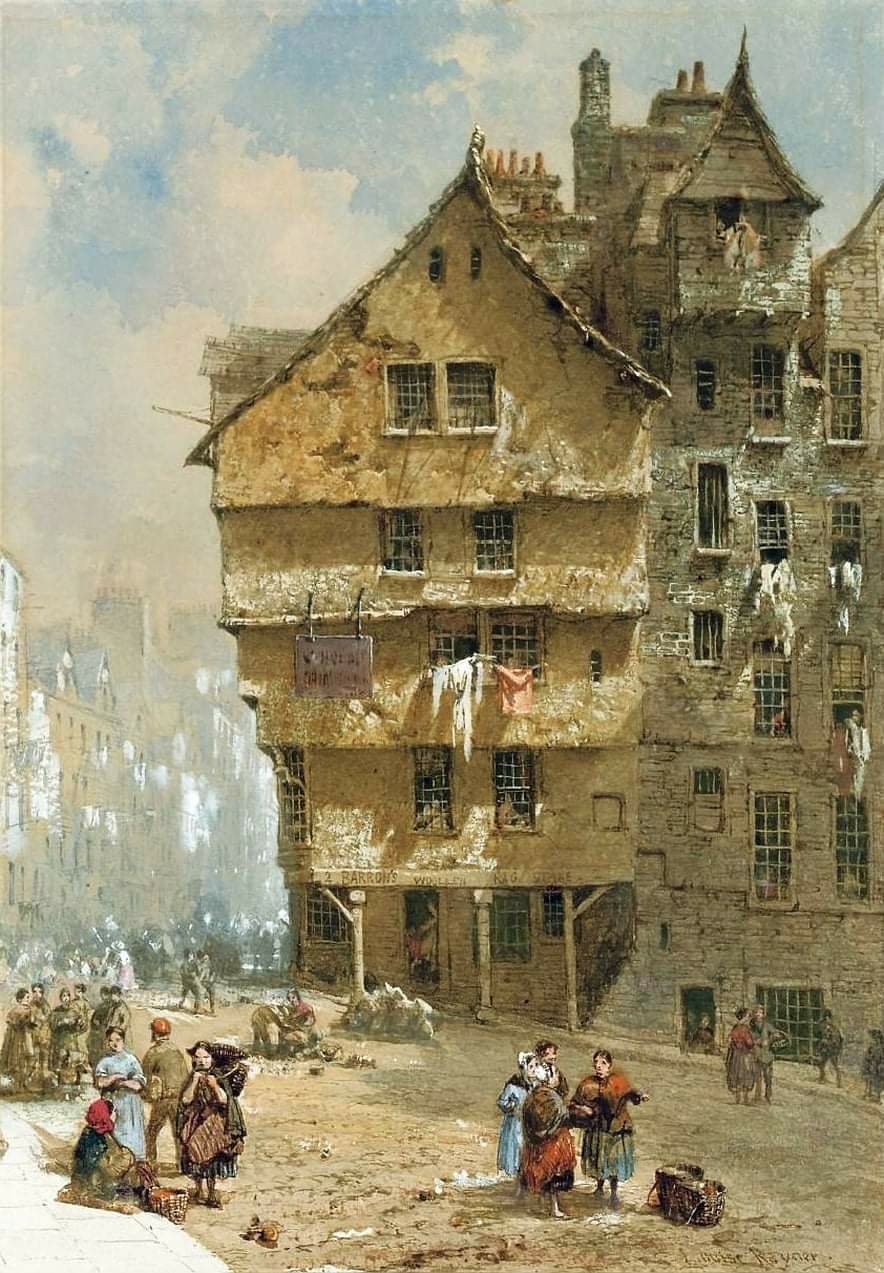
Louise Ingram Rayner (British artist) 1832 – 1924
Head of the West Bow, Edinburgh, s.d.
pencil and watercolour, heightened with bodycolour on paper
29.8 x 22.3 cm. (11.75 x 8.75 in.)
signed ‘Louise Rayner’ (lower right)
private collection
© photo Christie’s
Rayner was born in Matlock Bath in Derbyshire. Her parents Samuel Rayner and Ann Rayner (née Manser) were both noted artists, Samuel having been accepted for exhibition at the Royal Academy when he was 15. Four of Louise’s sisters — Ann (“Nancy”), Margaret, Rose and Frances — and her brother Richard were also artists. The family lived in Matlock Bath and Derby until 1842 when they moved to London.
Rayner studied painting from the age of fifteen, at first with her father and later with established artist friends of the family such as George Cattermole, Edmund Niemann, David Roberts and Frank Stone. Her first exhibited work, an oil painting entitled The Interior of Haddon Chapel, was shown at the Royal Academy in 1852, the first of a series of oils.
From 1860, however, her medium was watercolour, which she exhibited for over 50 years through organisations including the Society of Lady Artists, The Royal Academy, Royal Watercolour Society and the Royal Society of British Artists.
She lived in Chester in the Welsh Marches but travelled extensively, painting British scenes, during the summers in 1870s and 1880s. Her paintings are very detailed and highly picturesque populated street scenes capturing the “olde worlde” character of British towns and cities in the booming Victorian period. Her paintings are very popular today as prints and on jigsaw puzzles. Around 1910 she moved with her sister to Tunbridge Wells, and later to St Leonards, where she died in 1924.
Source: Wikipedia
